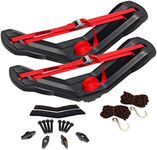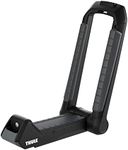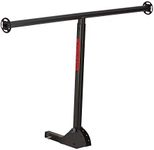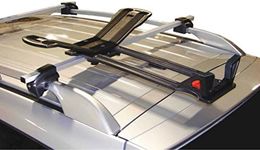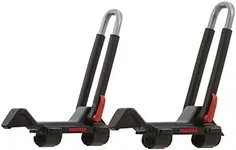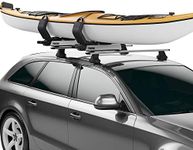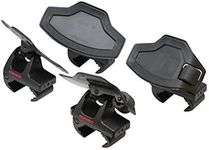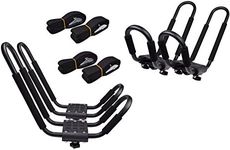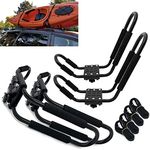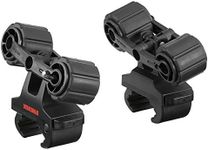Buying Guide for the Best Kayak Roof Racks
Choosing the right kayak roof rack is essential for safely and easily transporting your kayak on your vehicle. The best rack for you will depend on your vehicle type, the number and size of kayaks you want to carry, and how often you plan to use it. Understanding the key features and specifications will help you make a choice that fits your needs and ensures your kayak is secure during travel.Compatibility with VehicleCompatibility refers to whether the roof rack will fit your specific vehicle. This is important because not all racks fit all cars, SUVs, or trucks. Some racks are designed to attach to existing roof rails or crossbars, while others require a bare roof. To navigate this, check your vehicle’s roof type and look for racks that are either universal or specifically made for your car. If you have factory-installed crossbars, make sure the rack can attach to them. If your roof is bare, look for racks that come with their own mounting system. Picking the right compatibility ensures a secure fit and safe transport.
Rack TypeRack type refers to the design and style of the kayak carrier. The main types are J-cradles, saddles, stackers, and temporary pads. J-cradles hold the kayak on its side, saving space and making loading easier. Saddles support the kayak hull and are good for heavier or larger kayaks. Stackers allow you to carry multiple kayaks upright, which is great for group trips. Temporary pads are soft and easy to install but best for short trips or occasional use. Choose the rack type based on how many kayaks you need to carry, how often you’ll use it, and how easy you want loading and unloading to be.
Weight CapacityWeight capacity is the maximum weight the rack can safely hold. This is crucial because exceeding the limit can damage your car or cause the rack to fail. Racks are usually rated for a certain number of pounds or kilograms. To navigate this, check the weight of your kayak(s) and make sure the rack can handle it, including any extra gear you might carry. If you have a heavy kayak or plan to carry more than one, look for a higher weight capacity. Always match the rack’s capacity to your needs for safety.
Ease of Installation and UseEase of installation and use refers to how simple it is to put the rack on your car and load your kayak. Some racks require tools and more time to install, while others are tool-free and quick to set up. Loading features like fold-down arms or rollers can make it easier to get your kayak on and off the roof. If you plan to remove the rack often or want to load your kayak by yourself, look for racks that are lightweight, easy to install, and have user-friendly loading features. This will save you time and effort.
Security FeaturesSecurity features include locks and straps that keep your kayak and rack safe from theft and secure during travel. Some racks come with built-in locks for both the rack and the kayak, while others require you to buy them separately. Strong, reliable straps are also important to keep your kayak from shifting or coming loose. If you’ll be leaving your kayak unattended or traveling long distances, prioritize racks with good security features to protect your investment.
Protection for Kayak and VehicleProtection refers to how well the rack prevents damage to your kayak and your car. Good racks have padded contact points or cradles to avoid scratches and dents. Some also have features to prevent the rack from scratching your car’s paint. If you have a delicate or expensive kayak, or if you care about your car’s finish, look for racks with ample padding and protective materials. This will help keep both your kayak and vehicle in good condition.

